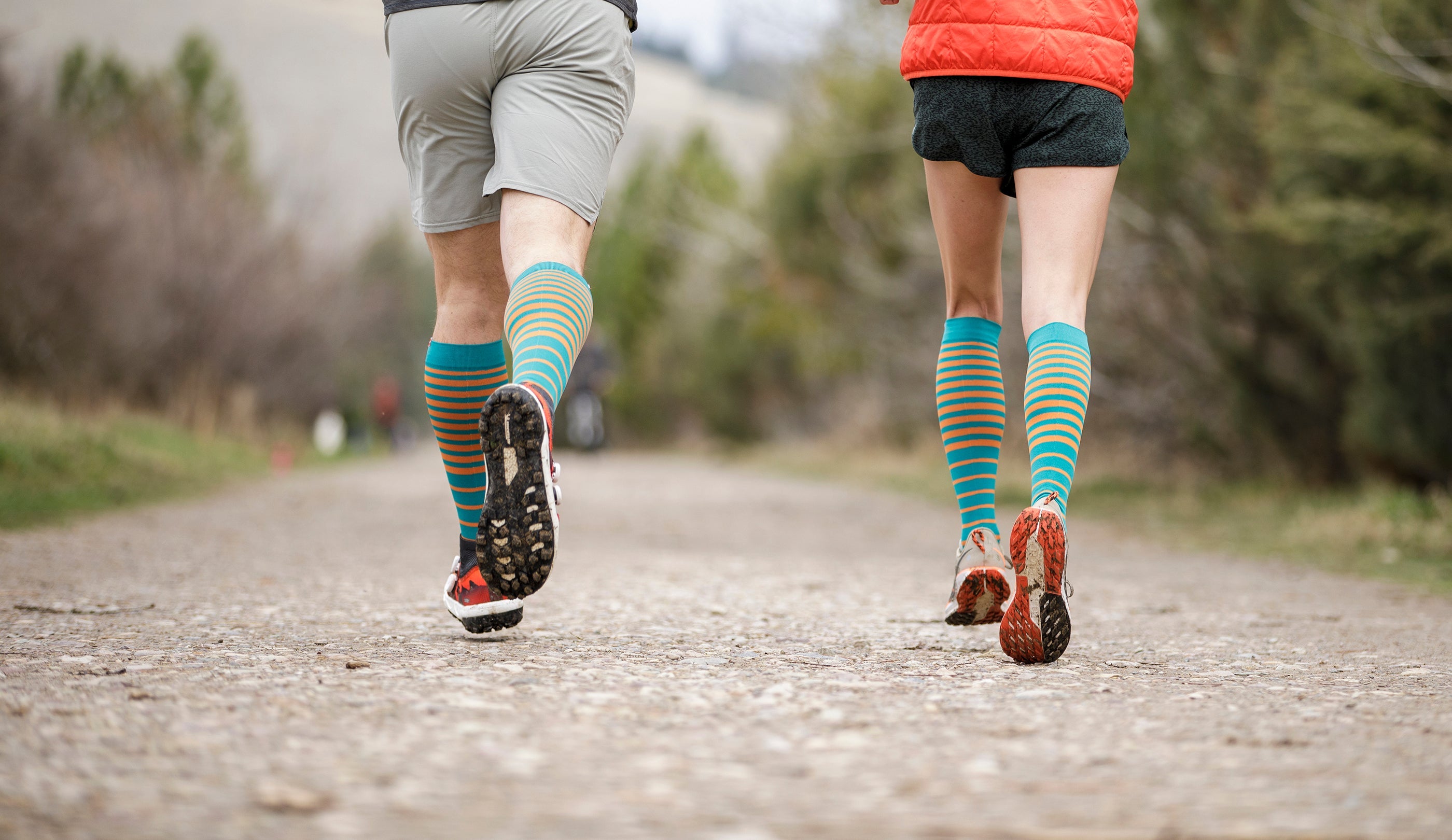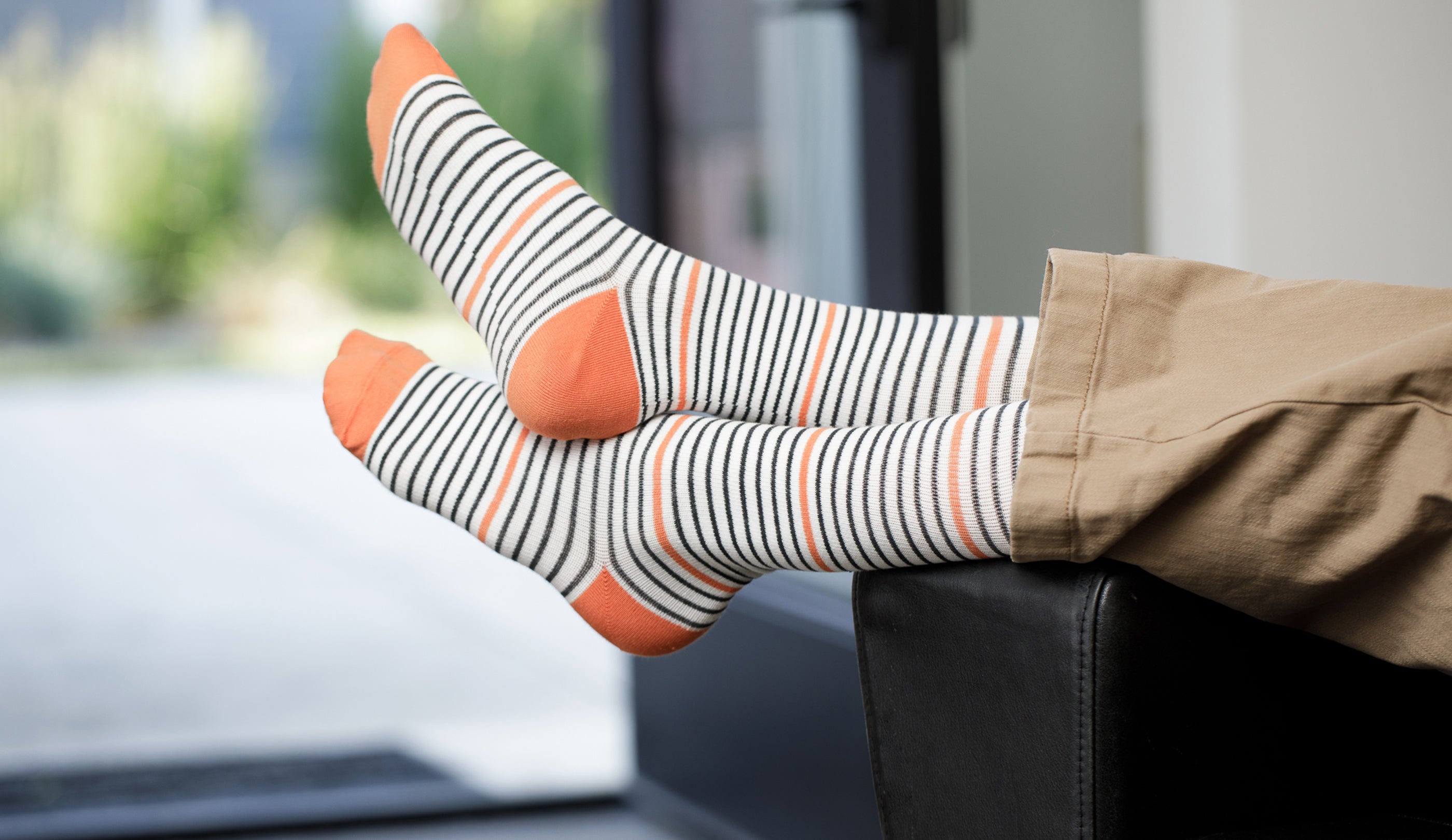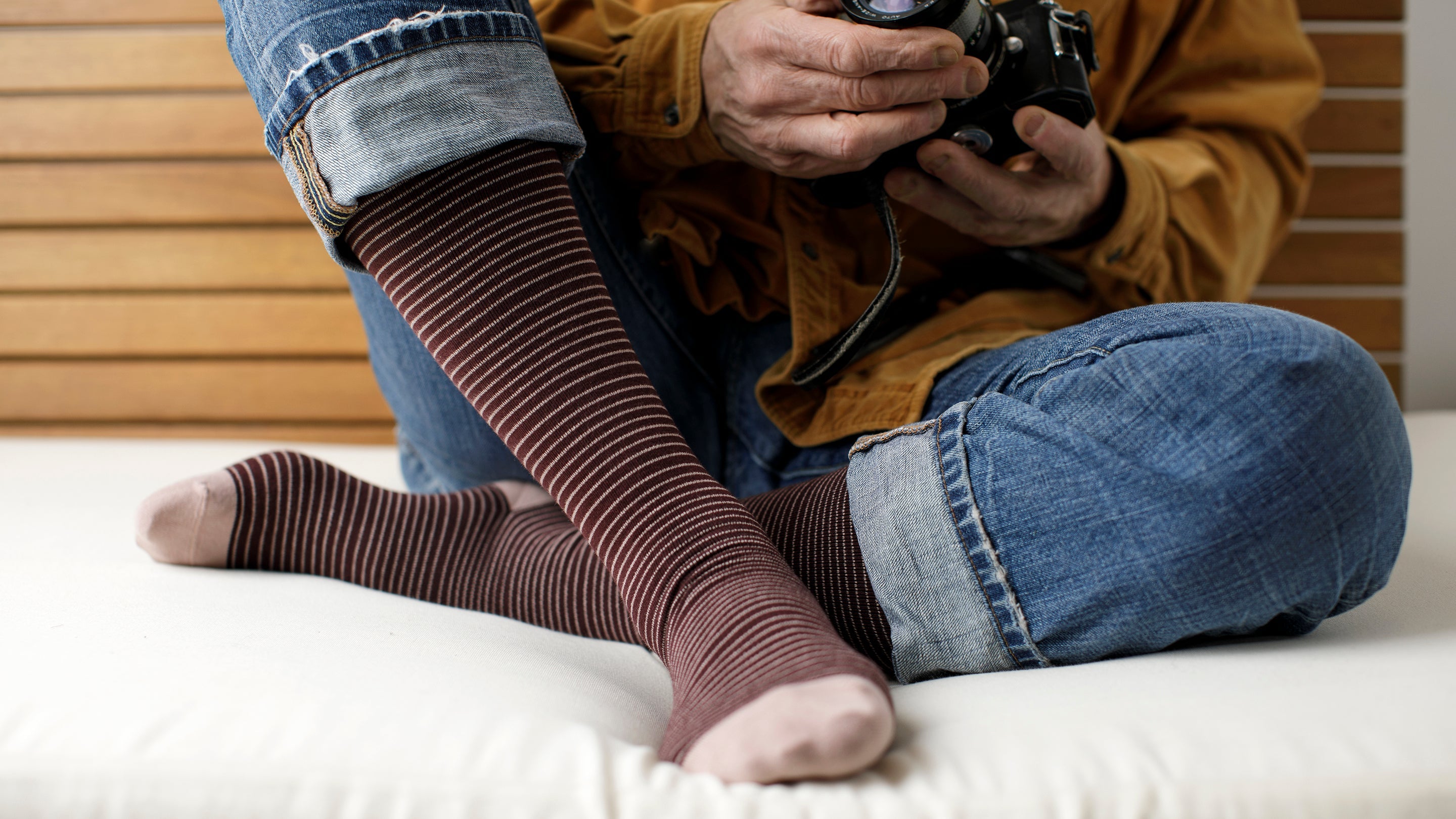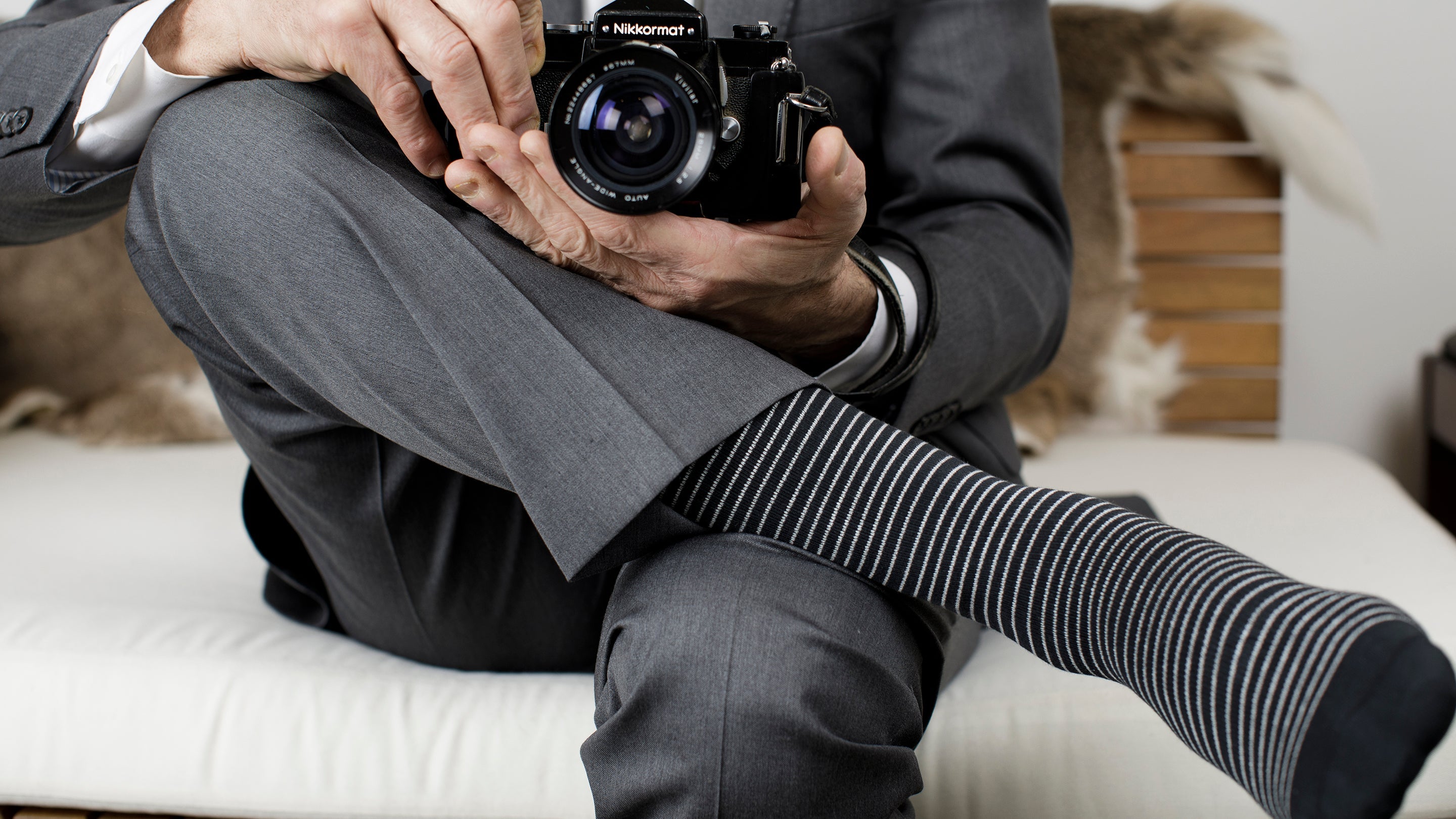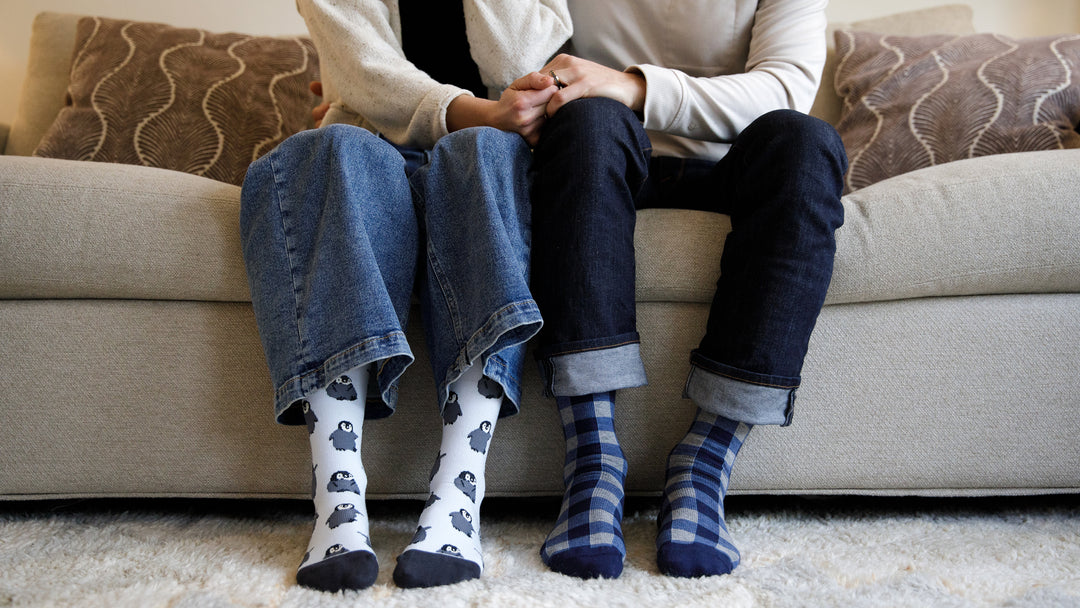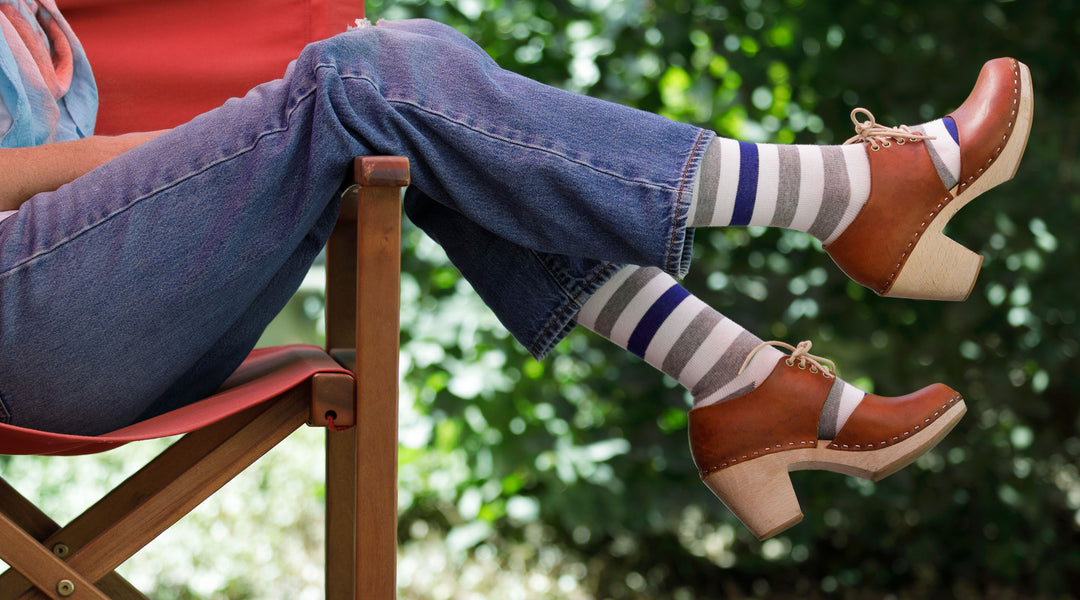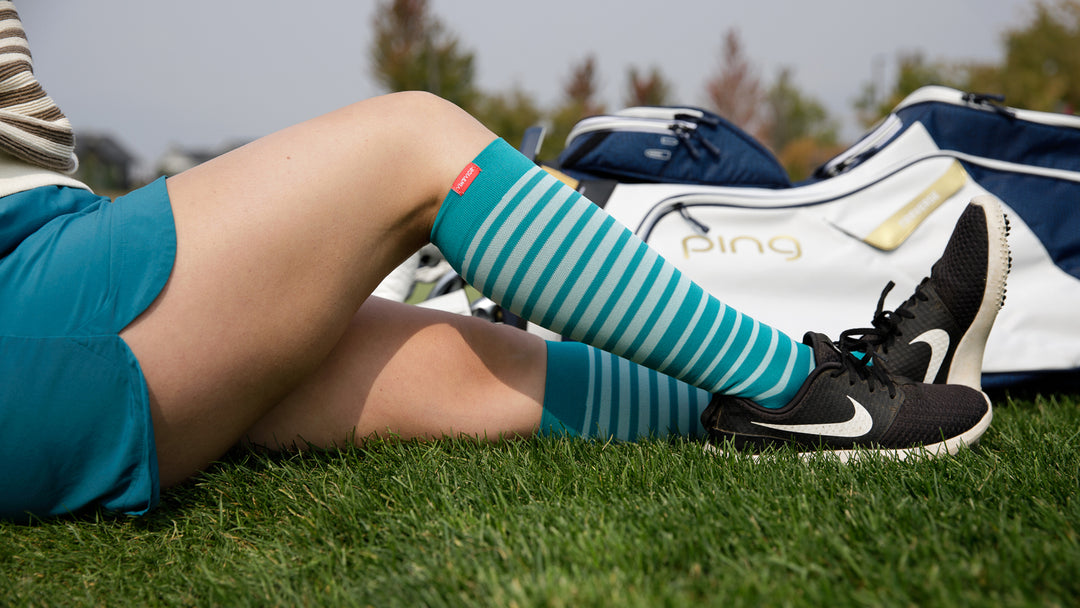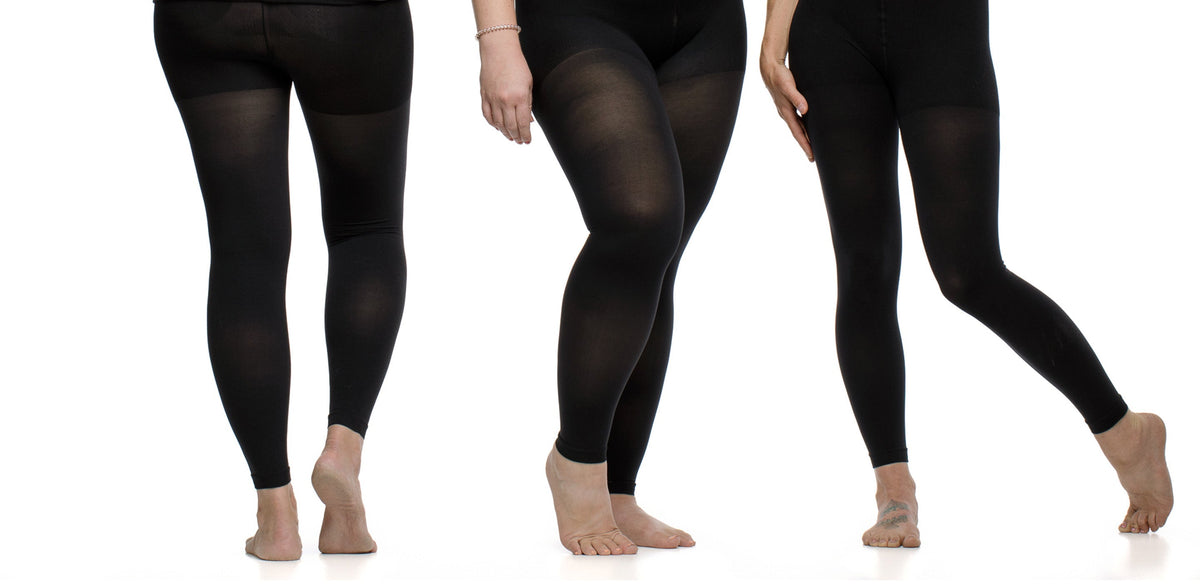

If you suffer from lymphedema (painful swelling caused by a build-up of lymph fluid), you’ve probably tried many solutions to improve lymphatic drainage. The good news is that, just like when you relieve blood pooling in the limbs with compression therapy, you can use compression tights and leggings to improve lymph transport and drainage. According to this study, compression will reduce the swelling caused by lymphedema, which could improve your quality of life!
Are you looking for the best lymphatic drainage compression leggings? Below is a helpful guide to help you make an informed choice. Read on to learn how to wear compression leggings to prevent or treat lymphedema, choosing the best pair for your needs.
Are Compression Leggings Right for Lymphatic Drainage?
Just like how knee-high compression socks apply therapeutic pressure to the lower limbs to boost blood flow and prevent fluid build-up in the lower legs, compression leggings or tights improve lymphatic drainage. Because they cover the entire legs, up to the waistline, compression leggings massage the legs from the ankles up, which prevents fluid build-up (which includes blood and lymph). They also support the circulatory system, helping blood flow through the veins and back up towards the heart.
Compression leggings improve lymphatic drainage because:
Compression pressure helps reduce swelling in your body’s tissues, countering any fluid build-up in between the cells (which is what causes lymphedema).
Compression garments have been shown to improve both venous and lymphatic return, which refers to the movement of fluids towards the heart to prevent them from pooling in the limbs.
Additionally, good lymphatic drainage promotes better skin and tissue health, according to the Lymphoedema Framework’s “Best Practice for the Management of Lymphoedema.” Using leggings (rather than just knee-high socks) extends this benefit to the whole lower body.


Key Features to Look for in Compression Leggings for Lymphatic Drainage
While compression leggings and tights cover the whole lower body to improve circulation and lymphatic drainage, you should be aware that not all work in the same way. Different materials, compression levels, and styles will give you a different experience and results. Here’s what you need to know.
Material and Fabric Quality
The fabric of your compression garments is important to ensure that the skin breathes adequately and that you’re not negatively affected by the temperature or bunching of the material. This is why, at Vim & Vigr, we offer high-quality compression tights in nylon, which is both flexible and breathable for the best comfort levels throughout the day.
Nylon tights are also a great match for different types of outfits, from casual to office wear. They move seamlessly with the body and offer you a good range of motion, while still applying therapeutic pressure to the legs.
If you are looking to venture into wearing compression socks as an alternative to leggings, then you can also choose cotton for everyday wear and merino wool for a fantastic thermoregulating, antibacterial, and breathable hiking or walking garment.
Compression Level
One key element of compression is how tight the garments are. This is measured in mmHg and starts with the 15-20 mmHg range, suitable for daily wear and for physical activity. This level of compression will provide a boost in circulation and help lymphatic drainage, without restricting your range of movement. It is ideal for wearing at work, on vacation, or when working out.
If you need more support, like when recovering from an injury or surgery, doctors recommend 20-30 mmHg compression tights and socks. These are also good for people who suffer from diagnosed lymphedema, lipedema, or varicose veins and blood clots. Finally, the 30-40 mmHg compression garments are prescribed by doctors to people who suffer from more serious conditions. They are only available with a medical prescription. If you are not sure what the right compression level is for you, talk with your medical provider.
Fit and Comfort
Your compression tights, leggings, or socks must fit tightly to boost circulation and lymphatic drainage. If your socks roll down or your leggings are too loose, you will simply not get the benefits of compression. But this doesn’t mean that you should wear uncomfortably tight compression leggings. You should still be able to move freely and relax as you wear them. For best results, always use the manufacturer’s sizing charts and guides to figure out the right size for you.
For Vim & Vigr compression tights, you’ll find a size guide on the product page, where you can map out your height and weight to determine the right fit.
Medical-Grade vs. Lifestyle Compression
As we explained above, people with severe health conditions may need to use medical-grade compression leggings or socks. In this case, your doctor will prescribe 30-40 mmHg compression garments. Regardless of the compression level, your tights don’t need to ruin your everyday style.
Our Vim & Vigr compression tights are stylish and seamless, so you can wear them under your clothes or with skirts, dresses, or loose tops. The footless tights can be used for walking, hiking, or exercising. And, if you want to wear a stylish compression garment that still boosts your lymphatic drainage, check out the many designs and colors of knee-high compression socks.
Style and Design
Compression doesn’t need to cramp your style. At Vim & Vigr, we believe in colorful, fun designs that match any type of outfit and give you freedom of choice and movement. You can opt for compression socks for the most variety, but we also suggest:
Compression sleeves that hug the lower legs, between the ankles and the knees, to boost circulation and support the shins and calf muscles.
Open-toe compression socks that you can wear with flip flops or sandals in summer, ideal also for dancing and yoga.
Compression tights that are easy to wear with dresses, skirts, and loose tops.

Ease of Use and Care
To give your lymphatic drainage compression tights a long life and ensure they stay effective, you should also consider the best ways to care for them. We always recommend washing these garments after every use. Keep their elasticity and pressure levels intact thanks to washing with cold water and mild detergent. Stay away from bleach and strong cleaning products. And always let them dry naturally (this won’t take long, especially with nylon stockings).
How to Choose the Best Lymphatic Drainage Leggings for You
Are you still wondering how to choose the best compression leggings for lymphatic drainage? Are you overwhelmed by the number of options on the market? The best lymphatic drainage leggings are the ones that match your needs, but you should also consult reviews and compare products from different brands to make sure you’ve found the right one for you.
Assess Your Needs
Poor lymphatic drainage occurs when the lymphatic system doesn’t function properly. This causes excess fluid or residue that has leaked out into the tissues to pool and lead to pain and swelling. To avoid this, you should be aware of what causes poor lymphatic drainage or lymphedema. The following list tells you what increases the risk for poor lymph drainage:
-
Breast cancer surgery commonly causes lymphedema - lymph nodes can be removed, and damage of lymph vessels is common
-
Pelvic surgery, where some pelvic lymph nodes are removed
-
Radiation therapy, which can cause scarring and damage to the lymphatic system
-
Physical trauma - such as an accident, which has the potential to damage lymphatic vessels under the skin
-
Infection
-
Obesity - excess fat can put pressure on lymph nodes and vessels
-
Inactivity - swelling in the legs can lead to poor lymphatic drainage
-
Tumors can cause problems with lymphatic drainage or even block it
-
Heart conditions
-
Blood vessel issues
-
Kidney disease
Depending on your medical history and health needs, your doctor will recommend full-length compression leggings or tights, knee-high compression socks or stockings, or other compression treatments such as intermittent pneumatic compression devices, lymphatic drainage massage, and other treatments. It’s important to use all these together under expert guidance to improve the functioning of your lymphatic system.
Compare Products from Different Brands
Look at multiple brands to evaluate their designs, manufacturing process, and quality. Graduated compression legwear has been proven to be the most effective by medical research (as compared to standard compression legwear).
Some may have a wider range of products to stimulate lymphatic drainage, so it’s good to see their capabilities and history, too. Also, brands with a good history from customer reviews, a history of making the compression garments, and good knowledge of the science behind lymphatic drainage are likely to make better quality products that will suit your needs.
Check Out Customer Reviews and Feedback
Reviews and comparisons of compression garments are useful because they allow you to see what experience other customers have had with a brand. Don’t forget to check not just the reviews on a manufacturer’s website, but also on generic platforms and online stores, where it’s less likely that someone has “cleaned up” what’s been posted.
Consider Alternatives to Lymphatic Drainage Leggings
Leggings are great for offering full-leg coverage and stimulating blood flow and lymphatic drainage in the lower body. However, they’re not the only option for reducing swelling and discomfort. In fact, very often, liquid and blood will pool in the lower ends of the limbs - i.e., below the knee and around the ankles. This is why you can still get great results by opting for knee-high compression socks and stockings.
Depending on your activity levels and where you intend to wear your compression garments, we also recommend calf sleeves to add support to the lower leg muscles when you work out or walk a lot. These also give you more flexibility in choosing different socks or going barefoot.
Poor lymphatic drainage can cause lots of discomfort, reduce range of motion, and affect your wellbeing. You can improve it with massage and compression therapy, wearing compression tights, leggings, or socks. These garments are versatile and easy to use, while offering effective relief from lymphedema. Whether you choose coverage for the full leg or just below the knee, at Vim & Vigr, we have a range of stylish compression solutions, including tights that look great with dresses and skirts.

References
Charles, T., Mackintosh, D., Healy, B., Perrin, K., Weatherall, M., & Beasley, R. (2011). Merino wool graduated compression stocking increases lower limb venous blood flow: a randomized controlled trial. Advances in therapy, 28(3), 227–237. Read it here.
Hamner, J. B., & Fleming, M. D. (2007). Lymphedema therapy reduces the volume of edema and pain in patients with breast cancer. Annals of surgical oncology, 14(6), 1904–1908. Read it here.
Hettrick H. (2009). The science of compression therapy for chronic venous insufficiency edema. The journal of the American College of Certified Wound Specialists, 1(1), 20–24. Read it here.
Lymphedema Framework – International Consensus. (2006). Best Practice for the Management of Lymphoedema. London: MEP Ltd. Read it here.
Mayo Clinic Staff. (2022). Lymphedema: Symptoms & Causes. Mayo Clinic Press. Read it here.
Pappas, C. J., & O'Donnell, T. F., Jr (1992). Long-term results of compression treatment for lymphedema. Journal of vascular surgery, 16(4), 555–564. Read it here.
Quilici Belczak, C. E., Pereira de Godoy, J. M., Seidel, A. C., Belczak, S., Neves Ramos, R., & Caffaro, R. A. (2018). Comparison of 15-20 mmHg versus 20-30 mmHg Compression Stockings in Reducing Occupational Oedema in Standing and Seated Healthy Individuals. International journal of vascular medicine, 2018, 2053985. Read it here.
Yang, W. T., Xiong, Y., Wang, S. X., Ren, H. L., Gong, C., Jin, Z. Y., Wen, J. H., Zhang, W. D., Tao, X. M., & Li, C. M. (2024). A randomized controlled trial of standard vs customized graduated elastic compression stockings in patients with chronic venous disease. Journal of vascular surgery. Venous and lymphatic disorders, 12(2), 101678. Read it here.
